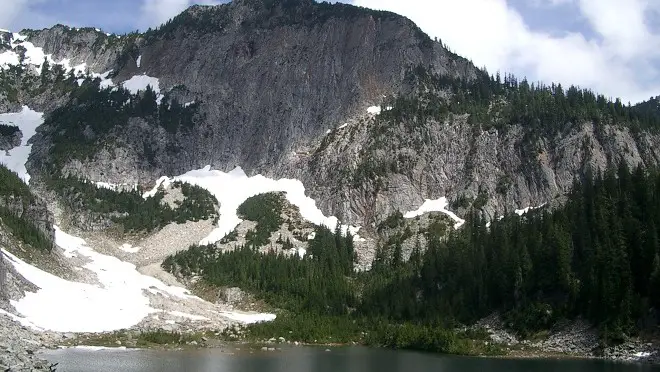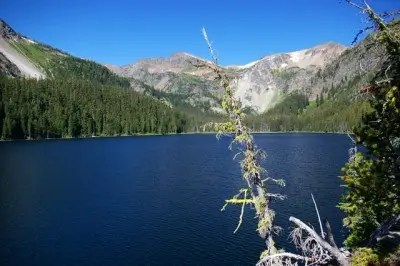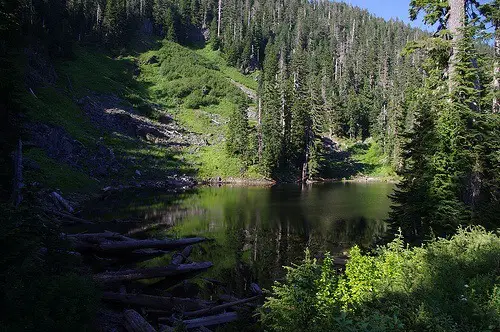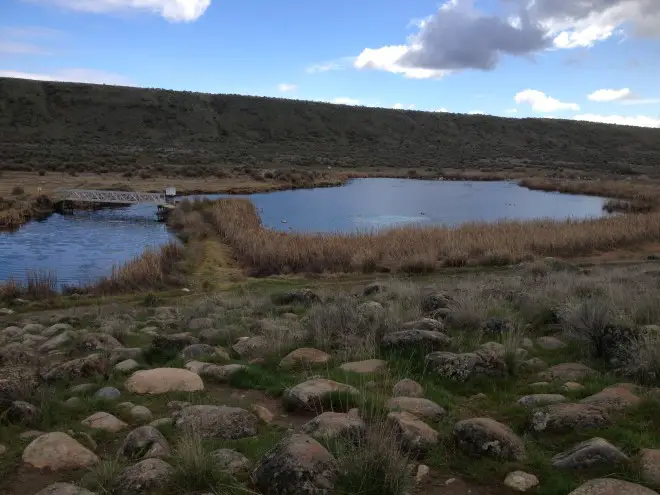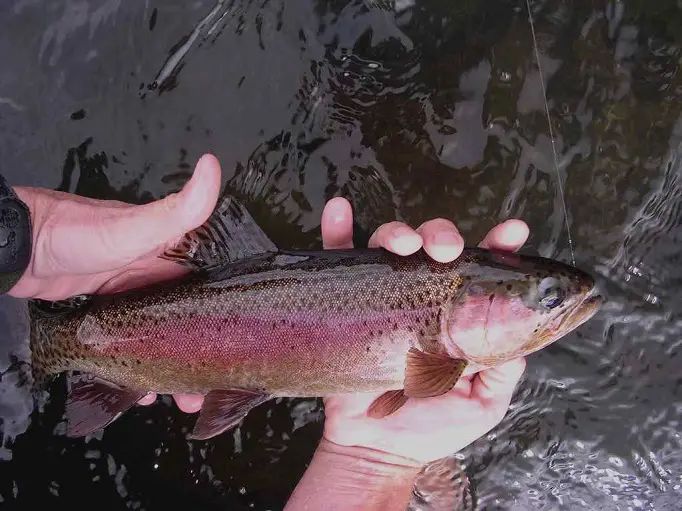Search
Latest Articles
5 Five Star Lakes & Streams
by Jai Colvin & Will Jukes for Anglers Club Magazine, September 04, 2016
Chelan County – Chiwaukum

Many of these highland lakes are overpopulated because they’re high in the mountains and lack a large population of native fish. In other words, the trout that were stocked there have no natural predators. Chiwaukaum Lake is hard to find and hard to get to, but the reward is world class brook trout fishing on 68.5 surface acres. It’s located in the Okanogan-Wenatchee National Forest. Getting there involves a long hike from the end of Chiwaukum road or the trails beyond Scottish High Camp. From Scottish High Camp, it’s about a 2 mile hike to visit Chiwaukum Lake.
Merritt Lake
Merritt Lake is also located in the Okanogan-Wenatchee National Forest and offers more brook trout. It requires a steep hike, but the famously fast fishing is well worth it. From Everett head east on US Hwy 2 for 65 miles to Stevens Pass. Continue east for another 11.3 miles and turn left onto Forest Road 657. From Leavenworth head west on US 2 for 23 miles. Proceed 1.6 miles on FR 657, until you see the trailhead at the end of the road.
Jefferson County – Charlia Lakes 1
Charlia Lakes 1 is a relatively small lake at 7.7 acres, but the cutthroat and rainbow practically jump into the boat. This Washington lake is located in the Olympic National Forest and getting there can be challenging. The best route is to head for Port Ludlow and then take 104 to 101 south. The lake is a short hike from the road.
King County – Hardscrabble – Upper & Lower

The Upper and Lower Hardscrabble Lakes are located in the Mt. Baker-Snoqualmie National Forest and are popular with locals. Both lakes are among the most overpopulated Washington lakes. The lower at 10.4 acres and the upper at 6.7 acres offer abundant rainbow trout. Remember that these lakes are backcountry areas and it takes an adventurous fisherman to make the trek. In order to get there take I90 N. Bend Exit #34, and turn towards truck stop. Take a right onto SE Middle Fork Rd. Continue on to FS Rd 56 (unpaved, potholes). Follow #56 past the Middle Fork Campground, across the river then take a right continuing to the Dingford Creek trailhead parking area (total ~19 miles). Hike or bike the rest of the now gated road about 7 miles to the Hardscrabble route take-off point. Alternatively, from Dingford cross the bridge over the Middle Fork River and hike (or bike on odd # days June 1st-Oct 31st) the longer Middle Fork trail #1003 and include a side trip to Goldmyer Hot Springs.
Skagit County – Little Gee Lake

Little Gee Lake is an extremely small lake at just 2.0 acres, but it promises too many brook trout and rainbow trout to get boring. Located in the Mt. Baker-Snoqualmie National Forest, this lake is easier to get to. Take Hwy 9 all the way out to 44th Ave NE/Finn Settlement Rd to the Skagit County line and Little Gee Lake.
These are just a few Washington lakes that need to be heavily fished; there are over 30 of these lakes throughout Washington State. They may take a little time to get to but the fishing is well worth it, and you get the satisfaction of contributing to the health of these fish.
5 Small Stream Creeks and Rivers Give the Classic Fly Fishing Experience
We spend a lot of time around here talking about fishing the big rivers in the Columbia River basin, or the open waters of the Pacific Coast. And why wouldn’t we? They’re great fisheries, and unique to the Pacific Northwest. Small stream fishing – little fish, tight casts, long hikes and 2 to 4-weight rods – often takes a backseat. It’s easy enough to find those streams in other states, places like Colorado, Idaho and Montana. So why spend time on that when Washington has so much of its own fishing to offer?
Of course, this neglects our local fans of small streams, who are left with nowhere to go if they lack the time or money for a trip out of state. But as you’ve probably guessed by now – if you didn’t already know – there’s plenty of great small stream fishing to be had in Washington State. And to help save you time, we’ve rounded up a list of what we think are the five best.
Teanaway River
Any one of the creeks and rivers that feed the Yakima River could have made this list, and you should look into them all. The Teanaway River is the final choice because it’s relatively easy to fish – there’s plenty of access through the Teanaway Community Forest, and it’s wide enough that there’s plenty of overhead clearance for casting. It’s probably the best family fishing spot on this list. Plus, it’s just under 2 hours from Seattle. Relative to some of the Eastern Washington destinations further down this list, that’s a stroll. The only downside is that this stream is closed to fishing until the drought lifts.
Nooksack River
Speaking of close to Seattle, anglers living in the city should look up the Nooksack River outside of Bellingham. It’s an hour and a half drive and, while the main channel itself isn’t what you’d call a small stream, it’s tributaries are a rich vein of salmonids. The Nooksack drainage has the distinction of harboring nearly every species of salmon and trout that can be found in the Pacific Northwest – chum, coho, pink and sockeye salmon, and rainbow, cutthroat, steelhead and Dolly Varden trout.
Rattlesnake Creek
A little further afield than the previous two entries, Rattlesnake Creek is a small, picturesque creek in the central Cascades near Nile. Rattlesnake Creek flows through rough country on mostly public land. It’s a hike to get to the best spots, but your reward is pristine water, a scenic canyon, plenty of overhead space for casting, and 20 inch westslope cutthroats.
Crab Creek

Crab Creek emerges just a few miles from Rearden in Lincoln County. It’s been called the longest ephemeral stream in North America. That means that in the driest parts of the year, the creek is a string of unconnected pools. Even when the water is flowing, it’s sometimes just a few feet wide. But the fish can survive these dry periods thanks to the cold spring water that feeds the creek, keeping the temperature in a tolerable range. Farther downstream near the Columbia confluence the stream runs all year, but heat and agricultural runoff make it uninhabitable for fish.
The upper creek flows through Channeled Scablands, a unique terrain created by catastrophic flooding during the last ice age. The floods washed away the soil and scoured out wide, steep-sided valleys with rocky floors. It’s a harsh landscape, but it creates two conditions that make Crab Creek special. First, it creates a varied water that presents the angler a new challenge around every bend. Second, it protects the fish; it’s far from any city and too dry for intensive agriculture. A few cattle ranches are the only substantial human presence to be found near the upper creek.
Rocky Ford Creek

Those that don’t acknowledge Crab Creek as the supreme Eastern Washington small stream fishery will probably argue instead for Rocky Ford Creek. And there’s an argument to be made, although the winner probably depends on personal preference. Rocky Ford is a sight casters dream, with lots of clear, gentle water and trophy sized rainbow trout.
-2.jpg)
